Are laminate counters good?
Laminate countertops were a long-time staple of residential kitchen & bathroom construction, but they started to fall off in popularity around the time rockstars stopped wearing spandex, which was somewhere in the 80s. A trend started at that time towards alternatives to laminate counters, such as tile, granite, quartz, concrete and soapstone to name a few - but for the best quality in these countertops you also need a rockstar’s budget and a keen understanding of countertop materials - because some take a lot more looking after than others. Our feeling? Maybe the latest generation of laminate countertops for kitchens & bathrooms merits a second look when building or renovating sustainably for a greener home.
Having looked through the options, we realized that laminate counters have made a pretty strong recovery of late, certain manufacturers having paid lot's of attention to the sustainability and toxicity of the materials used, and so they are now much more commonly seen than other countertop materials (or cheese metal bands with brightly-coloured stretchy pants for that matter).
What is a laminate countertop?
The term ‘laminate’ refers to any material constructed by bonding two or more material layers together and can apply to a range of products including plastics, wood, metal or particle board countertops.
In the case of particle board laminate counters, most of them are made about the same - core papers, resins and a melamine overlay are fused together with a particle board substrate to form a finished countertop. There are none out there that are completely free of toxins as High Pressure Laminate (HPL) with melamine is by nature a synthetic process, so you can stop wearing out Google trying to find one. The best you will do is find some with much lower emissions than others and reduced toxicity.
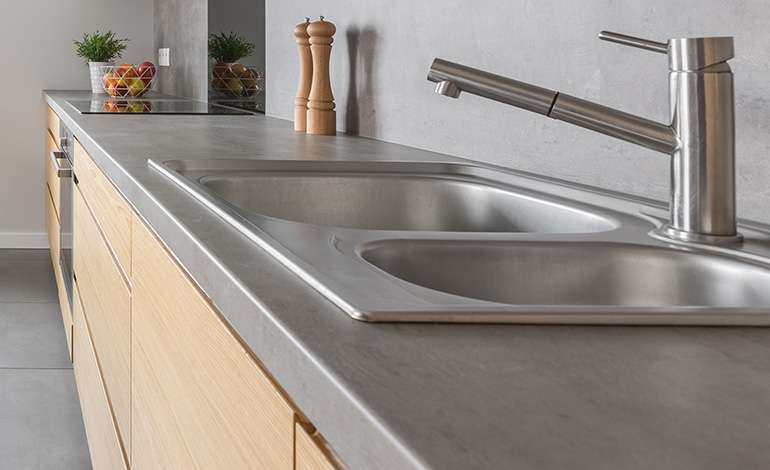
The technical view on melamine as a counter material for kitchens & bathrooms
Melamine can be manufactured from dicyandiamide, hydrogen cyanide, or urea. Modern commercial production of melamine usually employs urea as a starting material. Urea is broken down to cyanuric acid, which then can be reacted to form melamine. Traditionally (and this is where individual manufacturer's processes can make things more or less problematic) its most important reaction is that with formaldehyde, forming melamine-formaldehyde resins of high molecular weight. These compounds form under the influence of heat and then become fixed into an insoluble and infusible mold; this process is known as thermosetting. Melamine-based thermoset materials contain cross-linked polymers, which make the fixed molds strong and durable. Usually formulated with fillers and pigments, melamine resins can be molded into dishes, containers, utensils, handles, and the like or used as laminating agents or coating materials for wood, paper, and textiles which is where laminate countertops are created - the association of a particle-board structure with a hard wearing and impervious surface finish made of melamine. Formica and Melmac are well-known trade names for products based on melamine resins, and we spoke to Formica about their path to cleaning up laminate worktops under the Formica brand.
Finding sustainable green laminate kitchen & bathroom countertops
The definition of an eco-friendly counter top or a green kitchen countertop will vary from person to person depending on what exactly you are looking for. That could mean it is made with sustainably harvested materials, recycled materials, food-safe surfaces, formaldehyde-free and low VOCs materials or that it is durable and long lasting (pushing back the replacement date).
If we're talking sustainable homes and resilient homes, then the total carbon footprint also comes into play. But regardless of which green countertop you're considering, the final choice is going to come down to a combination of aesthetics, environmental performance and cost - and this is where identifying the best laminate countertops can help you find that find that sweet spot.
So, which are the greenest laminate counters?
Warning – not all laminate counters are created equal! We are all about high-performance construction here at EcoHome, but when it comes to choosing the best interior finishing materials, our greatest concern in a modern airtight building envelope would be in regards to the human health impacts of poor air quality due to the building materials we select and the rate they off-gas toxic chemicals into the air we breath.
It's an unfortunate and unacceptable fact that many mass-market building materials are still produced by the traditionally polluting larger industrialists, without sufficient concern for ’red listed chemicals‘ or off-gassing.
Typical tract-home construction, built down to a price "traditionally" - which if you think about it, might not be a good thing, and using these toxic building materials can lead to unsafe indoor air quality that, according to the EPA, can be 5 times more polluted than outdoor air due to toxic airborne particles that originate in building materials and surface finishes. Especially when you consider the fact that modern high-efficiency and airtight buildings keep all the polluted air in unless they're fitted with a proper ERV or HRV ventilation unit.
Since an increasingly large number of homeowners (and particularly children with young lungs that are still developing) are suffering from a variety of respiratory illnesses like asthma, we still recommend keeping toxins and carcinogens out of homes in the first place, so it's good to know which product labels to look out for when choosing the best laminate countertops.
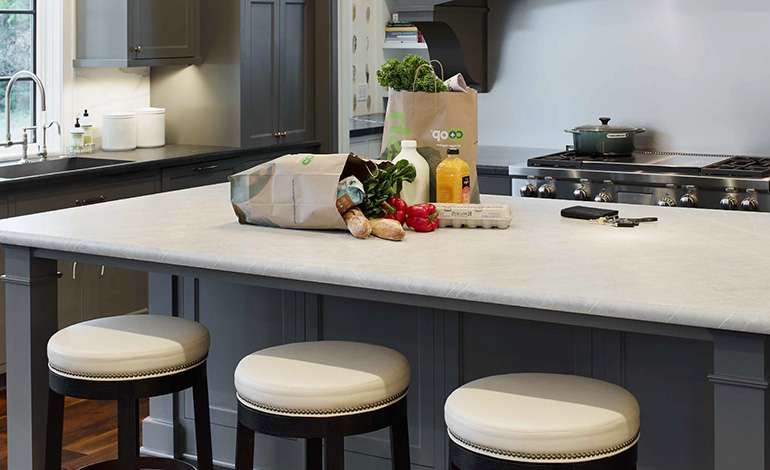
One standard that is worth knowing about when selecting any building material would be the GreenGuard rating system, a certification process which most commercially available building materials will have gone though. If they haven’t, that could already be seen as a bit of a ‘tell’ in poker parlance.
One example we found for a manufacturer of greener laminate kitchen counters is Formica, who have certified all their counters to GreenGuard Gold standard. Gold is the highest rating, indicating the lowest amount of toxins.
Formica is one of those brand names like ‘Kleenex’ or ‘Windsurfer’ that have had the good fortune of coming to represent an entire category of material, so don’t be confused by that and be certain to seek out genuine Formica countertops by visiting an approved distributor or retailer if you want to find a better standard laminate counter. If anyone finds other brands of kitchen counters certified GreenGuard Gold and commercialized in North America that are as durable, sustainable and healthy as Formica's, please let us know in the comments below.
What does GREENGUARD gold certified mean on a laminate countertop?
The GREENGUARD Environmental Institute (GEI) Certification program helps manufacturers create, and buyers identify, products and materials that have low chemical emissions, improving the quality of air in which the products are used. The standards establish certification procedures including test methods, allowable emission levels, product sample collection, testing, as well as to program application processes, toxicity limits and acceptance for certification.
The GREENGUARD certification procedure identifies interior products and materials with low chemical and particle emissions. Being GREENGUARD certified provides assurance to consumers that products designed for use indoors meet strict chemical emissions limits. Importantly, GREENGUARD certification supports sustainability claims made by manufacturers by backing them with scientific data from an unbiased third-party organization - so EcoHome view it as this - if you're thinking of choosing a laminate countertop for reasons of budget, availability and sustainability, be sure to actively seek out a GREENGUARD Gold certified one.
Laminate countertop styles and scratch-resistance
This is where it becomes really tempting to snag yourself a laminate counter and save a lot of money. First of all, the variety of textures, print patterns, edge styles etc., means you have a lot more looks you can achieve that rather successfully mimic other materials such as granite, quartz, or even stainless steel, without the downsides of maintenance, sealing, staining, breakage and of course cost.
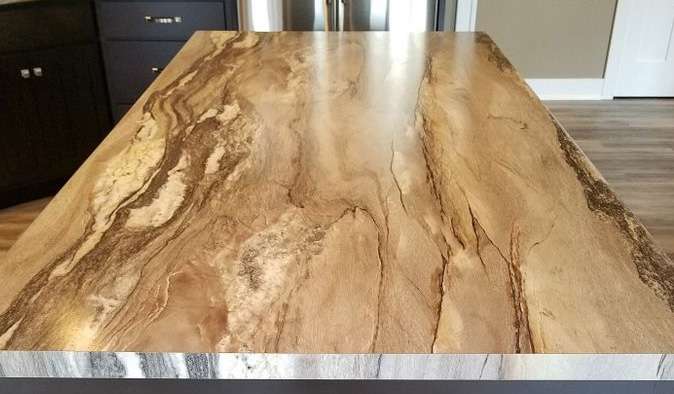
Stone countertops for example, are not always as easy to look after as you might think. As I write this, I am reminded that the slate counter beneath my laptop is more than ready for an additional coat of food-safe sealant!
And secondly, today’s laminate surfaces are far more resistant to scratches and burns from contact with hot pans or purses with metal feet than older laminate counters. That said, take sensible precautions to make laminate countertops last as long as you can with a few small considerations: Identify and buy a branded product with a proven and certified pedigree for performance and low emissions (ie. independently tested & certified), when in a kitchen, don’t put hot pans directly on them and don’t use them directly as a chopping board! The very best laminate kitchen and bathroom countertops are more scratch and heat resistant than ever, but try not to test that theory and everyone stays happy!
How resistant are laminate counters to staining?
When choosing a laminate counter, I'd personally go for a more patterned and textured surface that mimics stone as my experience tells me these stay looking nicer longer, but it all comes down to how generally careful you and your family treat the home and your possessions - although accidents can always happen too!
Last but not least - harsh chemicals - let's face it, if you're using a cleaning product, nail varnish, hair color etc which is likely to damage a high pressure laminate countertop in a kitchen or bathroom - imagine what it's doing to you, the user, and your family - and go find an eco-friendly alternative!
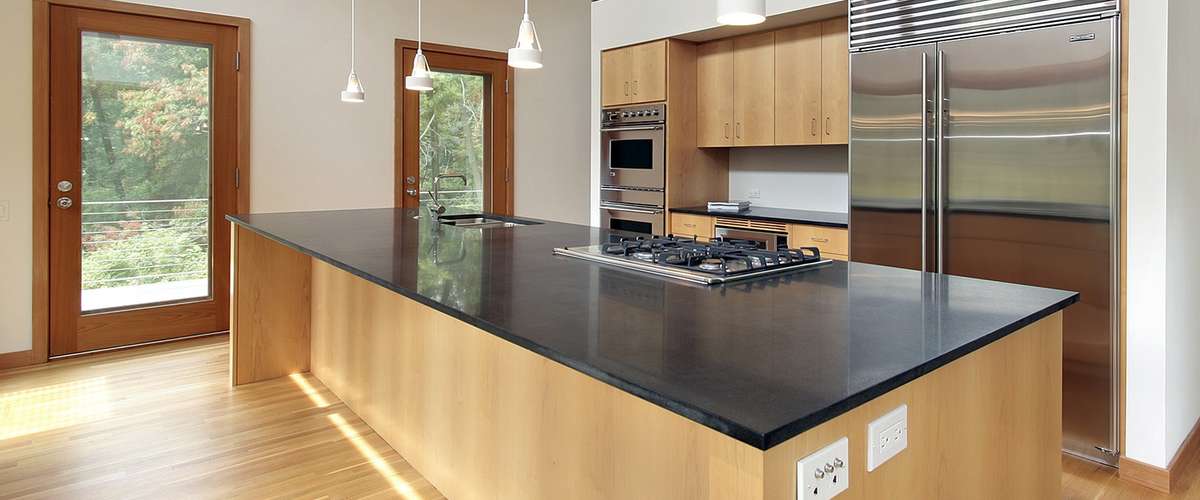














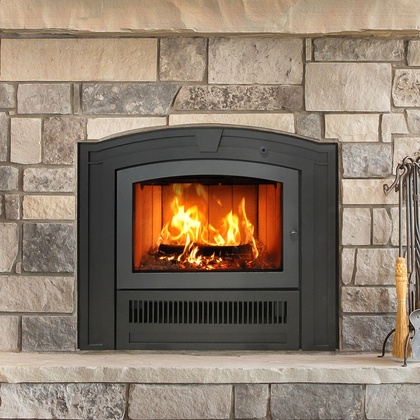

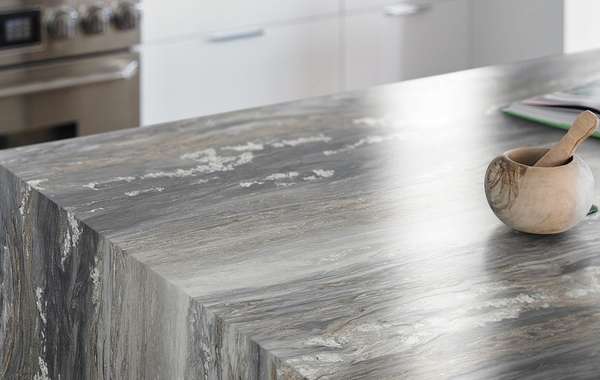
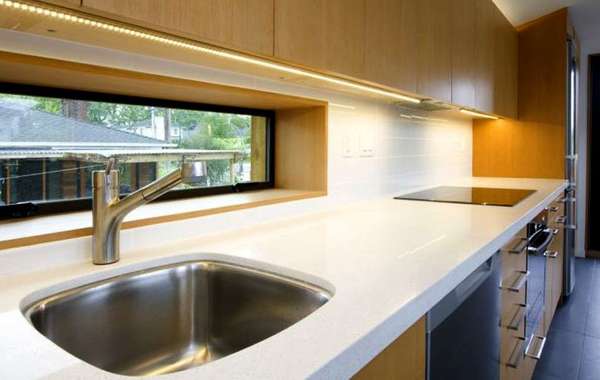
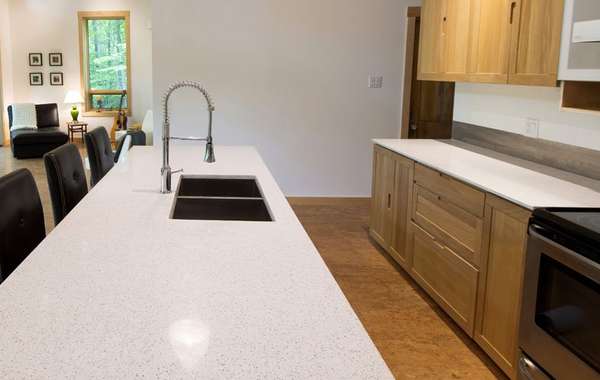
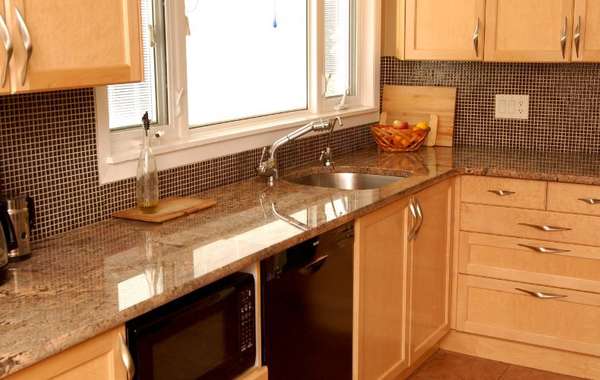
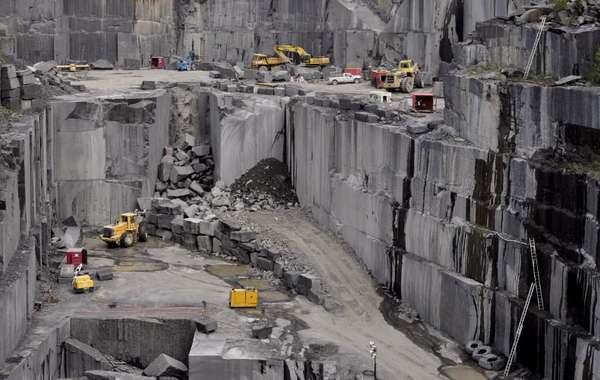


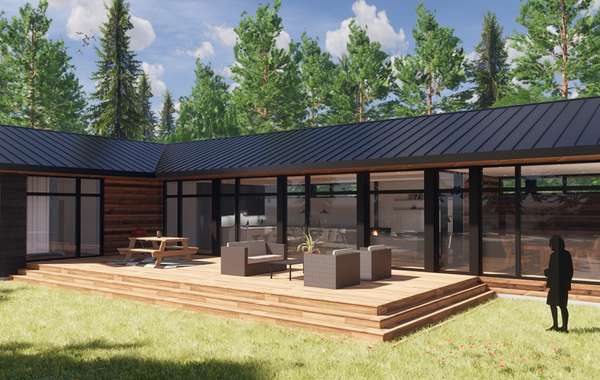

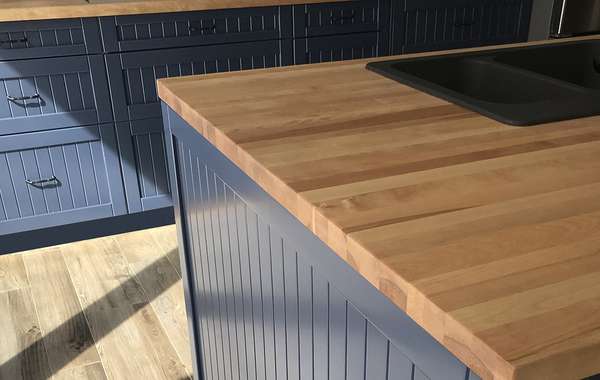
Comments (0)
Sign Up to Comment